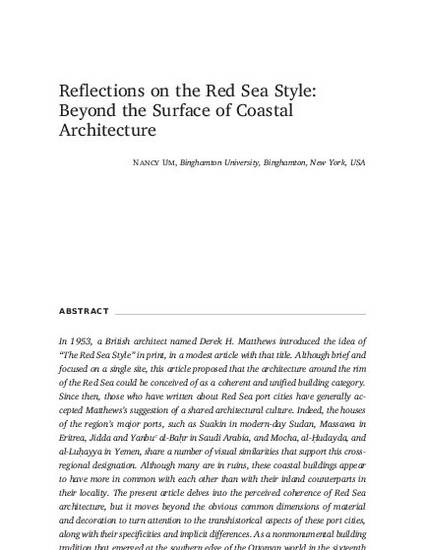
- Red Sea,
- architecture,
- Suakin,
- Massawa,
- Mocha,
- Jiddah,
- Jedda,
- Ottomans
In 1953, a British architect named Derek H. Matthews introduced the idea of “The Red Sea Style” in print, with a modest article of that title. Although brief and focused on a single site, this article proposed that the architecture around the rim of the Red Sea could be conceived of as a coherent and unified building category. Since then, those who have written about Red Sea port cities have generally accepted his suggestion of a shared architectural culture. Indeed, the houses of the region’s major ports, such as Suakin in modern-day Sudan, Massawa in Eritrea, Jidda and YanbuΚ al-BaΉr in Saudi Arabia, and Mocha, al-Дudayda, and al-LuΉayya in Yemen share a number of visual similarities that support this cross-regional designation. Although many are in ruins, these coastal buildings appear to have more in common with each other than their landed local counterparts. This article delves into the perceived coherence of Red Sea architecture, but moves beyond the obvious common dimensions of material and decoration, to turn attention to the transhistorical aspects of these port cities, along with their specificities and implicit differences. As a nonmonumental building tradition that emerged at the southern edge of the Ottoman world in the sixteenth century and continued into the twentieth, the Red Sea style represents a tangible case of sustained cross-cultural contact across a linked maritime region and thus moves beyond the conventional modern limits of continent and nation.
“Reflections on the Red Sea Style: Beyond the Surface of Coastal Architecture,” Northeast African Studies 12:1 (2012): 243-271.